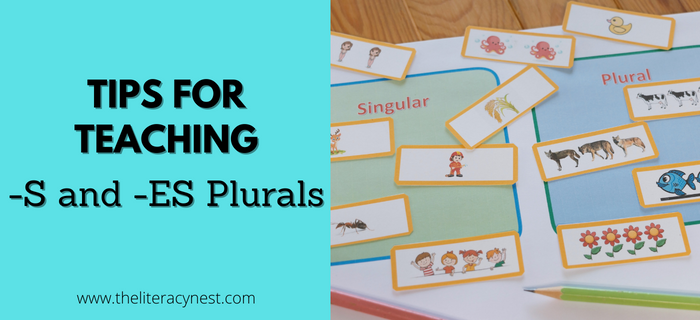Tips for Sentence Dictation

Before sentence dictation, we dictate sounds and individual words. During these activities, we are providing students with on-the-spot support to use their SOS strategy, and providing them with immediate corrective feedback. This can be very much a “We do it” portion of the lesson in a gradual release of responsibility model.
Why do we use sentence dictation?
The sentence dictation portion of the lesson is where everything comes together. Students are integrating the new learning with the other concepts they know to write the dictation sentences independently. In the gradual release of responsibility model, this is the “You do it” portion of the lesson. It is not unusual for a student to be able to apply the new concept to words in isolation. However, they may have more difficulty when that same concept is used as part of continuous text. Students might spell all the words correctly on their spelling test, only to misspell the same word a few minutes later in their writing. Similarly, sentence dictation gives them practice and accountability for putting their skills to use in a more complex scenario.
How can sentence dictation inform our instruction?
Since sentence dictation is the “You do it” portion of the sequence, we are able to see where students are on their journey toward mastery. Sometimes the most valuable information is on previously learned spelling rules that need additional practice. Watching students carefully allows us insight into their thought processes and valuable information about their confidence with a variety of language structures. We get a glimpse into how they handle complex sentence structures.
How can I get the most out of dictation time?
1. Wait and reread
After students write the individual words in the second portion of the writing lesson, wait to have them reread those words until after the sentence dictation portion is over. This time gives a little distance from writing the words. It is a good measure of what the student has retained and how they are building toward mastery of the skill in reading. You can see where they need further instruction or practice. If they stumble while rereading these words, make a note of that to include the tricky words, in reading words, encoding, or game review practice. Stress that the students are not just rereading the words out loud for your benefit, but for themselves. We are working on instilling independence and self-checking.
Learn more! Listen to season 4, episode 7 of the Together in Literacy podcast, The Power of Observation: What, When, and How.
2. Underline or highlight
In addition to having students write the dictation sentences, have them underline or highlight the concept for the day and read those words separately.
3. Be deliberate with error correction.
Use a combination of multisensory techniques and Socratic questioning to guide students to the correct answers. If a student quickly fixes an error, encourage them to explain why they made the change or use the SOS procedure to confirm that they are correct. Very often students look to us for confirmation, so it is important to give them the tools to confirm for themselves.
4. Don’t just question wrong things.
If the student used a tricky spelling rule, praise them and ask them how they knew. This can sometimes uncover sneaky but important misunderstandings.
5. Use an editing checklist such as CUPS or COPS.
Having students look for specific items such as capitalization, spacing, punctuation, and organization is a further step on the road to independence. Students usually begin to independently check for capitals at the beginning and punctuation marks at the end after only a few lessons once they hear that it is time to “Call the COPS”.

6. Have students read the sentence back.
Reading the sentence back to themselves is a great strategy that helps them pick up on errors such as omitted or repeated words. It is common for our hands and brains to go at different speeds when writing. Allowing students to catch this error for themselves is very useful. I often remind them that it is an easy strategy for them to carry over to their classroom. Reading the sentence out loud is an opportunity to link reading and writing and practice fluent phrasing.
How can we scaffold to support students at their level?
Scaffolding our instruction starts from the moment we give the students a piece of paper. Some students are ready to write the heading and format and number the paper by themselves. Still, other kids need much more support at first. For those kids that need a very structured format, begin by giving them a formatted paper. It can have a specific spot for their name, date, and concepts. You might also include spots for sounds, SOS words, and dictated sentences. Providing developmentally appropriate lines and spacing is helpful. It may also be beneficial to include an editing checklist.
Another way we can tailor our instruction to our students is with the length and complexity of our sentences. A learner at a very beginning level that is only 7 may benefit from a simpler shorter sentence such as: Jane and Mom ate cake. An older student working on the same phonogram (a-e) can handle a more complex sentence such as: Mom made a big cake for Jane, and they ate it.
For students who may have difficulty remembering the whole sentence, it is helpful to use manipulatives. Use counters and models pointing to the counters as you say the sentence. Arranging the counters in short phrases may help students remember the phrases accurately. Have the student repeat the sentence while pointing to the counters. When they can repeat the sentence accurately, they are ready to begin writing. In the event, that you have become overzealous and written a sentence that is too long for their working memory, split the sentence up, but try to dictate in longer meaningful phrases. For example, in a compound sentence, you might dictate the two sentences that have been combined one at a time. If the student has difficulty remembering part way through, I like to repeat the whole sentence rather than just telling them the next word. We are building independence and confidence.
Another helpful memory aid is the use of word lines on the paper. Making a line for each word helps the early learners with spacing and gives them a way to hold onto the order and placement of the words. As you say the sentence, point to the lines and have the student do the same. You can also use specific visual cues capital letters, punctuation marks, and irregular red words.
It is particularly helpful to front-load your instruction before writing. Talk about the meaning of the sentence and different sentence parts. If there is a prepositional phrase, talk about where or when the sentence is happening. Encourage students to visualize the meaning of the dictation sentence.
If a student is not yet ready for even a short sentence, you can have students write or trace a limited portion of the sentence, such as a known word, or the target sound.
What should dictation sentences include?
Dictation sentences should make sense. They should be carefully constructed to include the new concept, if multiple examples’s even better. Dictation sentences should incorporate recently learned concepts when possible. Just as important is what not to include. It is important to avoid any unfair words, such as words with concepts not yet taught or learned words the child doesn’t know. If the use of such a word is unavoidable to make a meaningful sentence, provide the word for the child.
Looking for more? Read my post, 3 Tips for Maximizing Dictation!
How can we use dictation with advanced students?
As students move into more advanced concepts and are ready for a greater challenge, we can incorporate some additional strategies. Make sentences longer and more complex. Use sentences with different types of clauses and phrases that can be placed in multiple places. Dictate a short paragraph of related sentences. You will likely need to repeat it a few times, but this gives an opportunity for students to recognize complete sentences and decide for themselves where punctuation is needed.
Incorporate some additional writing skills such as sentence combining and having students write their expanded and more detailed sentences. Have students generate their sentences as a response to comprehension questions or as a reaction to a story or something they feel strongly about.
Want to learn more? Check out my YouTube video Tips for Dictation!
Lesson Planning and Organization
When I first started my Orton-Gillingham training, I wished there were certain forms created so that I could have them all in one file, print them out, and be ready to go. This product is a comprehensive set of materials that you can use to organize your OG sessions and make them engaging.
Grab this resource in my TpT store!
Are you looking for a list of words to use in your Orton-Gillingham lessons? Word List Builder has got you covered!
Save time searching for words to use in your lessons! Create customized and meaningful review, build your folder of words, create templates and games, and much more in Word List Builder.









